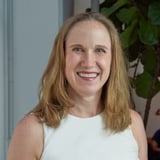Summary
In her keynote at the Enterprise Experience Conference, Catherine Courage detailed her personal journey at Citrix, where she began as a solo design leader in a 20-year-old, engineering-driven company with little design focus. Backed by CEO Mark Templeton, she built a team that grew to nearly 350 people by driving culture change, shifting the company's mindset from feature-centric engineering to customer-centric experience. Catherine structured the transformation into four phases: chaos, reaction and influence, organization and impact, and refinement and differentiation. She highlighted the importance of building trust and credibility, tackling middle management resistance (with programs like Stanford’s D School boot camp), and fostering collaboration between product management, engineering, and experience teams. Strategic hiring with culture fit, securing executive support, quick wins like unifying product design languages, and creating collaborative workspaces were key tactics in early phases. As the team matured, learning to say no with rationale prevented burnout and bottlenecks. Catherine expanded the focus beyond products to include the full customer journey, gaining a seat at the executive table and integrating functions like brand and web development. She stressed ongoing communication, community engagement, and developing business knowledge among designers to sustain influence. Catherine also addressed measurement challenges, recommending pilot programs for NPS and usage data. Her story offers practical advice on scaling enterprise UX teams and embedding customer experience into corporate strategy.
Key Insights
-
•
CEO support, specifically from Mark Templeton, was pivotal in legitimizing the design transformation at Citrix.
-
•
Building trust and credibility across engineering and product management was more critical than immediate design overhauls.
-
•
Enterprise companies often mistake more features and faster delivery for better products, ignoring true user experience.
-
•
A simple, shared design language with five principles helped make experience relatable and accessible internally.
-
•
Middle management is a major obstacle to change; sending them to Stanford D School boot camps converted many skeptics into advocates.
-
•
Creating open, configurable, and unbookable collaboration spaces dramatically improved team creativity and engagement.
-
•
Saying no strategically, with clear rationale, is essential to avoid team burnout and maintain quality as design teams scale.
-
•
Expanding focus from product design to end-to-end customer experience (including support and sales) is critical for large enterprises.
-
•
Designers need business acumen and language to influence at the executive level and secure a seat at the table.
-
•
Measurement of experience impact requires culturally relevant KPIs; pilot testing is better than rolling out one metric broadly.
Notable Quotes
"If we don’t get good experiences in the workplace, we’re going to beat the system and go get products that actually help us do our jobs."
"More features and functions do not equal a better product."
"This job is about culture change, not just building a design team."
"Building trust and credibility was more important than immediately overhauling products."
"Middle management likes things the way they are and are very risk averse, which can be a big obstacle."
"Having unbookable, configurable spaces for real-time collaboration is crucial for creativity."
"Saying no with purpose and rationale helped us scale from nine people to over 150 without burning out the team."
"You can’t just focus on product experience; you need to look at the whole customer ecosystem from the first touchpoint."
"Designers must develop business understanding to keep a seat at the executive table."
"Measurement is hard; pick culturally resonant metrics and pilot them before scaling broadly."
Or choose a question:
















More Videos

"Business leaders are super busy, data-driven, competitive, and have a finely tuned bullshit meter."
Doug PowellClosing Keynote: Design at Scale
November 8, 2018

"A growth mindset in research means being ready to adapt protocols based on what actually works with participants."
Mila Kuznetsova Lucy DentonHow Lessons Learned from Our Youngest Users Can Help Us Evolve our Practices
March 9, 2022

"Backcast from preferred or risky futures to start thinking about what we need to do today to get there or avoid that outcome."
Sarah GallimoreInspire Progress with Artifacts from the Future
November 18, 2022

"If your users are happy, that anecdotal feedback often carries more weight early than quantitative metrics."
Lada Gorlenko Sharbani Dhar Sébastien Malo Rob Mitzel Ivana Ng Michal Anne RogondinoTheme 1: Discussion
January 8, 2024

"The hackathon is a low-commitment way to get people creatively engaged and having fun."
Alnie FigueroaThe Future of Design Operations: Transforming Our Craft
September 10, 2025

"You shouldn’t send another survey unless you’ve implemented changes and allowed time for behavior to adapt."
Landon BarnesAre My Research Findings Actually Meaningful?
March 10, 2022

"It’s the worst thing when someone feels dumb in front of a customer because the tools don’t support them."
Emily EagleCan't Rewind: Radio and Retail
June 3, 2019

"We did a blended approach with a visual refresh first to minimize differences between old and new and buy time."
Malini RaoLessons Learned from a 4-year Product Re-platforming Journey
June 9, 2021

"Assume positive intent, practice a service mindset, and curiosity over ego — remember we’re all in this together."
Asia HoePartnering with Product: A Journey from Junior to Senior Design
November 29, 2023
















